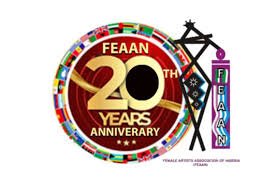In the world of visual art, a striking observation can be made: in every ten art pieces on display—whether meant for adornment, exhibition, or sale—there is often a representation or depiction of women as models. These artworks, while seemingly abundant in their portrayal of female figures, create an illusion of adequate representation.
However, the underlying reality points to a stark disparity: women in the art sector do not receive the same opportunities or recognition as their male counterparts.
This disparity manifests in various ways. Women artists often find themselves constrained by societal expectations that dictate how they should express their creativity. They are frequently forced to conform to a particular narrative that does not encapsulate their diverse experiences or artistic visions. Such limitations suppress the richness and dynamism inherent in women’s art, compelling them to fit into predefined roles that only serve to reinforce traditional stereotypes.
Moreover, when women dare to deviate from these accepted norms or venture into more avant-garde, challenging, or personal territories, they often face dismissal or marginalisation. Their contributions may be overlooked in favour of male artists who receive greater visibility and accolades, perpetuating a cycle of inequality within the art world.
This systemic disparity raises important questions for these female artists who lament and advocate for more equitable representation and opportunity that could foster a more inclusive and vibrant visual art landscape.
The Public Relations Officer of the Female Artists Association of Nigeria (FEAAN) and an Abuja-based artist, Nelly Idagba, passionately shared her insights on the evolving landscape of gender representation in the visual arts. While acknowledging the progress made, she highlighted that challenges remain, particularly concerning equality in recognition and access to opportunities for women artists.
Nelly reflected on her own experiences when she began painting professionally, noting that women artists often face heightened scrutiny and have fewer platforms to showcase their work compared to their male counterparts. She recalled submitting her work for an exhibition where, despite positive feedback from her peers in FEAAN, a male curator unexpectedly rejected her piece.
“When I began painting professionally, I noticed how often women artists were either underestimated or expected to conform to a certain style or narrative. At one point, I submitted my work for an exhibition, and while the feedback on the art was positive from my Female Art Association, a certain male curator for some reason surprised me and rejected the work to exhibit. It was strange but it reminded me that even talent is sometimes second-guessed when it’s not coming from where people expect it to,” she recalled.
Through her involvement with FEAAN, Nelly has found a network of incredible women who support and uplift one another. She acknowledged the pivotal role that organisations like the Society of Nigerian Artists (SNA) play in fostering opportunities for female artists.
To bridge the gender gap in the arts, she emphasised the importance of mentorship programs, accessible grant funding, and balanced representation in exhibitions, juries, and leadership roles.
A Nigerian artist based in the United Kingdom, Chidimma Urunwa revealed that though she has no single defining moment of inequity, women are not given an equal playing ground in the visual art space.
“For instance, there have been times when female artists were underrepresented in exhibitions or not taken as seriously in professional spaces. Culture also plays a big role in shaping these biases what is expected or accepted from women in the arts can often be limiting, and that shapes both participation and reception. Just less than 2 years in the UK and I can tell you I have received more appreciation and respect as an artist (a female artist) than I have ever received all these years practising back in Nigeria,” she remarked.
Chidimma advised that it’s also important to challenge the cultural norms that discourage women from fully expressing themselves or pursuing art as a career. Change will come with consistent advocacy, education, and the willingness to create space for all.
Another female artist, Joy Mbatotom, echoed similar sentiments regarding the societal expectations placed on women, often related to family and caregiving responsibilities. She pointed out that these traditional roles can unintentionally hinder women’s ability to fully dedicate themselves to their artistic careers, ultimately affecting their productivity.
Joy shared her own experiences as the only female graduate in her art school class, where her work was frequently subjected to different standards of critique compared to her male peers.
“As the only graduating female in my class during art school, I faced heightened attention and expectations from my instructors, with my work being analysed or critiqued through the lens of my gender. I was made to explain or justify my work in ways my male peers weren’t,” she narrated.
Membership in associations like FEAAN and SNA has been instrumental for Joy, helping her cultivate credibility and recognition within the art community and facilitating collaborations, commissions, and sales.
To address the issue of inequality in the art world, Joy stressed the need for a collective acknowledgement of biases, providing equal access to resources, and fostering a diverse and inclusive art community.
Secretary General of the Society of Nigerian Artists(SNA) Rowland Goyit, recognised these challenges as structural rather than a reflection of talent.
He pointed out that many female artists face limitations in access to institutional support, opportunities for national exhibitions, and often grapple with gender bias in the recognition of their artistic legacies.
Goyit also highlighted the SNA’s commitment to addressing these barriers by curating exhibitions that centre women artists. He showcased the growth of artists like Helen Nzete, whose participation in Africa Art Basel 2025 exemplifies this focus. Other artists like Chidimma Urunwa and Nelly Idagba are also being supported through significant platforms, enhancing the visibility and celebration of women in the arts.
Emphasising the importance of gender equity in the art world, Goyit affirmed that creating a balanced narrative is essential for honouring the full spectrum of Nigerian art. The SNA is dedicated to ensuring that women’s contributions are recognised and supported, as this inclusivity is vital for the future of Nigerian art.
Director of the National Gallery of Art (NGA), Ahmed Sodangi, agreed on the pressing need for gender equity. He discussed the NGA’s initiatives aimed at fostering female creativity through intentional policy shifts and a collaborative Memorandum of Understanding (MoU) with FEAAN. This partnership focuses on curating exhibitions, offering masterclasses, and establishing a nationwide mentorship scheme.
Sodangi elaborated on the benefits of this agreement, which include access to professional development grants, an artist-in-residence program, and a digital archiving initiative to document the work of female artists.
Reaffirming the NGA’s commitment to fostering visibility and opportunity, he stated, “We are dedicated to ensuring that the contributions of women artists are not only recognised but also celebrated.”

